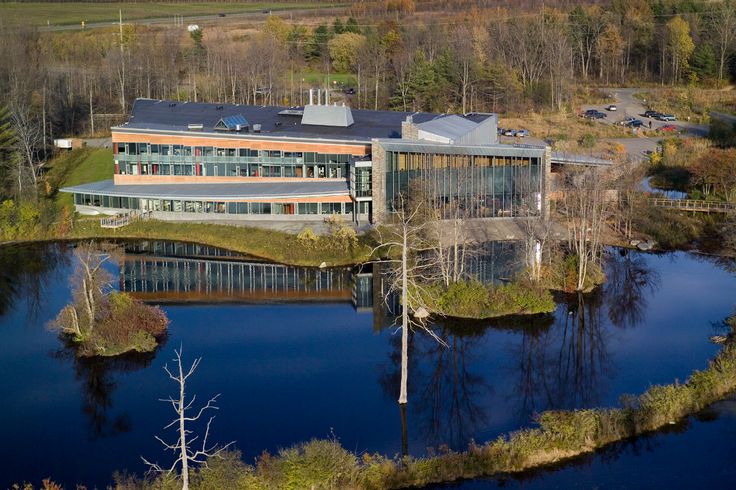Spring Field Ornithology class, March 26-May 18, inaugurates Cornell's newest building
By Allison Wells

Participants in the 2003 session of the perennially popular class, Spring Field Ornithology, will have a bird's-eye view of Cornell University's newest building.
The class, with Wednesday evening lectures and weekend field trips between March 26 and May 18, will be the first public use of the Cornell Lab of Ornithology's new Imogene Powers Johnson Center for Birds and Biodiversity, located off campus on Sapsucker Woods Road between Route 13 and Hanshaw Road.
Inside the new facility, instructor Stephen W. Kress, the National Audubon Society vice president for conservation and leader of the course for the past 25 years, will bring birds to life with multimedia lectures about identification, natural history and behavior. Complementing the lectures are weekend morning field trips to area birding hot spots, such as Stewart Park and Montezuma National Wildlife Refuge, during peak migration times.
The cost is $105 for lectures or field trips, or $195 for both sections. Lab of Ornithology members are eligible for discounted prices. For an additional cost, participants can choose to go on two special overnight field trips: a chartered bus trip to the Cape May-Ocean City, N.J., area, and a trip to Arnot Forest, located just outside Ithaca in Van Etten. Participants receive a discounted price for both special field trips if they sign up for them when they enroll in the course.
Registration is by phone, (607) 254-2452 (outside Ithaca, (800) 843-2473) or by visiting the lab's secure server http://www.birds.cornell.edu/sfo .
Kress is known for his pioneering efforts to restore Atlantic puffins to the coast of Maine and as the author, co-author or editor of more than 20 books. His latest, Saving Birds , with co-author Pete Salmansohn, will be published this spring. "Birds have so much to teach us about themselves and their habitats," says Kress. "We just need to learn how to watch and listen. Spring Field Ornithology is a terrific way to do that."
Media Contact
Get Cornell news delivered right to your inbox.
Subscribe